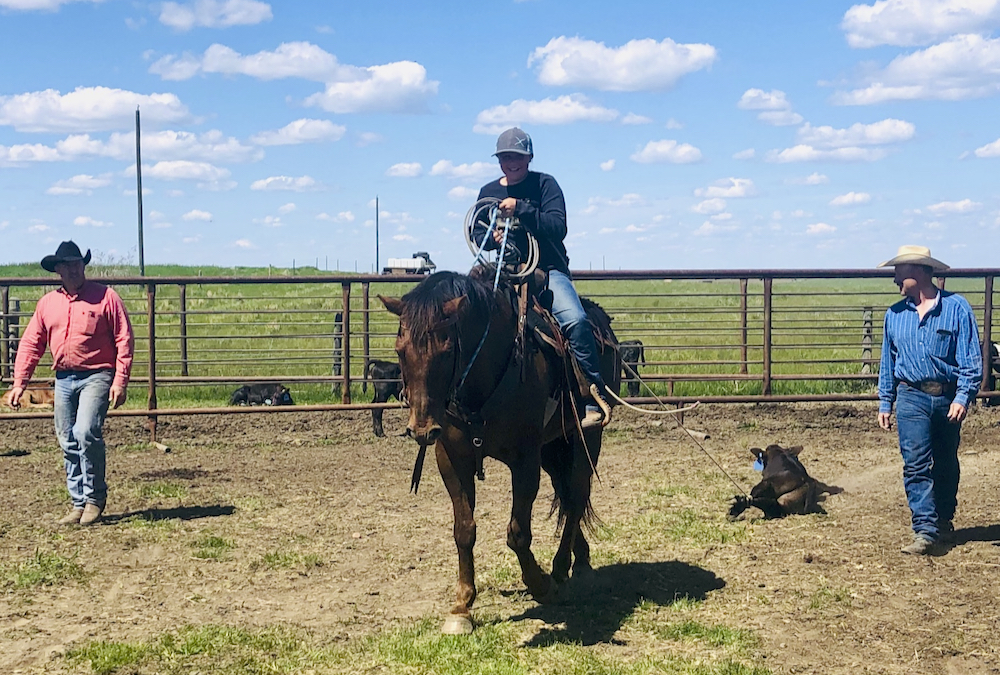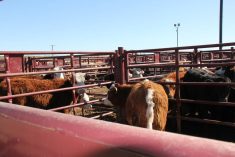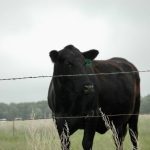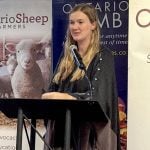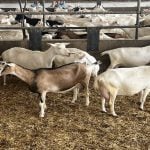At Highway 21 Feeders, the Miller family knows exactly the type of calves they want in their pens. In their quest to source higher-performing feeder cattle, improving feed efficiency at the seedstock level is moving them towards this target.
“The goal has always been to try and help drive a better product to come into the feedyard,” says Lyle Miller, the second generation in the family to feed cattle near Acme, Alta.
“We wanted to feed better cattle, and we want to be able to procure better cattle from our genetics to try and improve feed efficiency, especially with the higher cost of feed grains today and likely into the future.”
Read Also
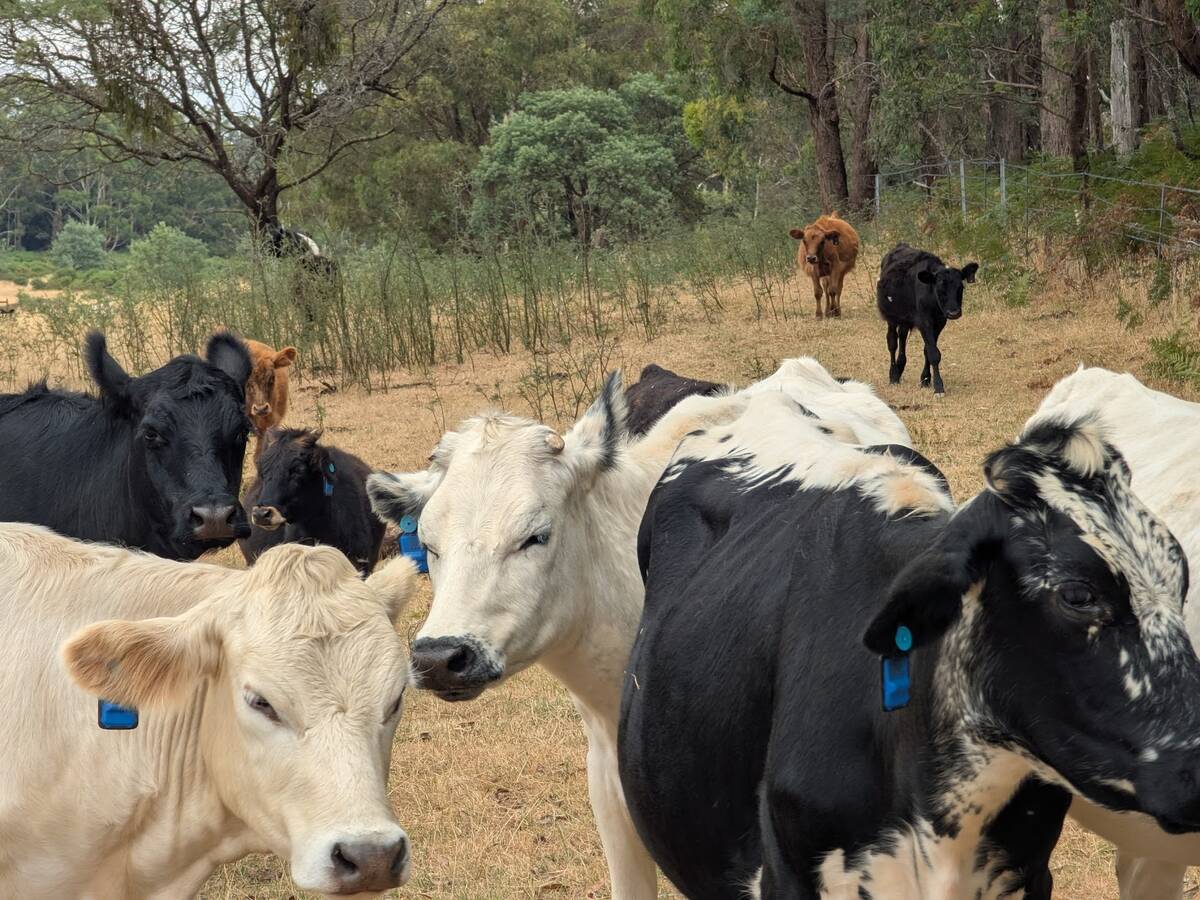
Australian company brings ear-tag tech to Canadian pastures
With Smart Paddock, beef farmers and ranchers can track their cattle through GPS technology
This March, the Millers will move closer to this goal when they host their first bull sale, offering a lineup of bulls selected for production traits that increase profitability.
Using data to help improve their operation has always been important for Highway 21 Feeders, established in 1981 by Ed and Linda Miller. Their three children all play a role in running the operation. Lyle manages their grain farm as well as the cattle research and breeding division. Shannon manages the daily feedlot production and accounting. Lee is involved in pasture management and running the cow herd.
With a 20,000-head capacity, this custom feedlot offers full services, including backgrounding, custom grazing, retained ownership and financing, risk management services and cattle marketing.
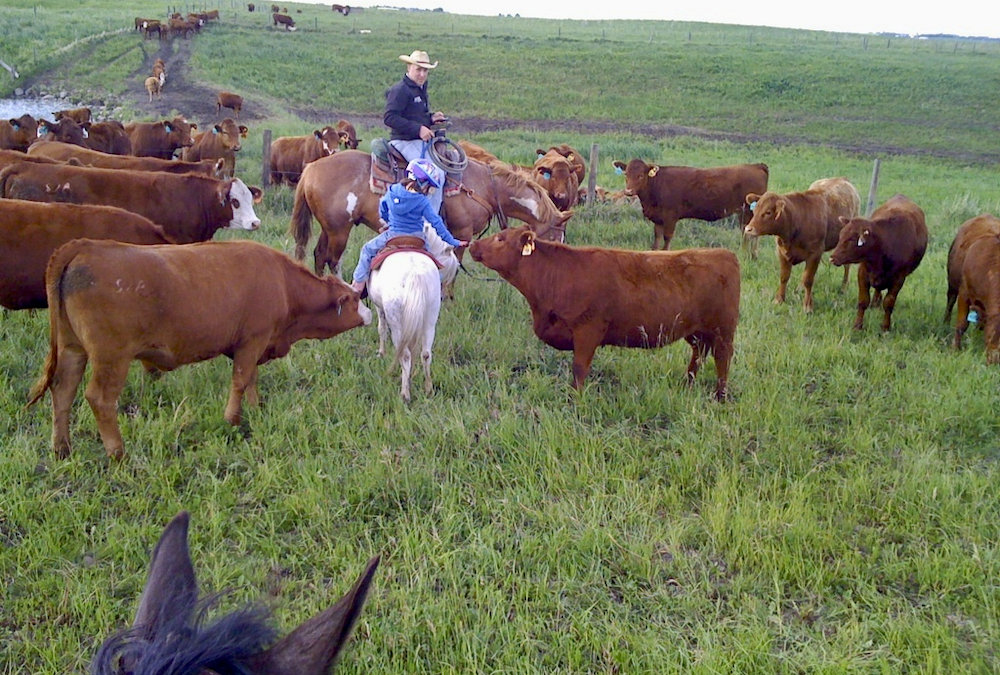
For their seedstock division, previously based in Saskatchewan, they first sourced bulls for a cowherd of around 5,000 head. However, this became costly, and the variation in data on the animals and traits prioritized by different operations wasn’t consistent with what they wanted in their calves. To dial in the performance indicators they value, they decided to start raising their own bulls.
After selling the majority of the commercial cow herd, they moved the rest of the females to their ranch at Hanna, Alta., to focus on seedstock production, with a commercial herd consisting of Gelbvieh, Simmental and Angus genetics that originated from a long-time breeder of composite cattle, Guy Johnson of Eddystone, Man. In the last four years, they’ve moved towards Simmental-Angus cross cattle and started a purebred Charolais herd, citing the breed’s terminal and maternal traits that make Charolais-cross calves highly sought after by feeders.
“When we were producing our own bulls, our focus was, of course, trying to as much as anything to make a better feeder animal from both a feed efficiency standpoint … and a grading standpoint,” says Lyle.
“On our own cowherd, fertility, feet, legs, udders, calving ease, docility — all that is number one on the maternal side, but the calves that they produce, other than for the maternal part of the operation, we want to make sure are the most efficient in the yard here.”
To do so, two performance measurements stand out to the Millers, based on their decades of experience.
“We feel that RFI — residual feed intake — and the feed-to-gain measurement is a very important part for the sustainability of the industry. It creates huge savings in maintaining a cow and huge cost savings in feeding a calf,” says Ed Miller, the feedlot’s founder and Lyle’s father.
Compared to the progress seen in other livestock species over the past 50 years, genetic advancement and standardization in the beef industry have been much slower, Ed notes. While predictions of performance have their place, he favours making decisions based on data for the traits that he knows have the greatest impact in the feedlot.
“EPDs have been a very useful tool used by the industry for a lot of years. We have found them valuable to use, but RFI for cow development and feed-to-gain for feedlot performance is worth more than all the rest of them,” he says. “They’re hard-driven numbers, not predicted.”
To find seedstock raised and tested specifically for these traits, however, proved difficult, further necessitating the creation of their own bull program.
“Half a dozen years ago, we’d looked for bulls that we could buy that were tested for feed efficiencies, but the reality of it is unless we were going to only buy our bulls from very few select places, and most of them in the U.S., the opportunity wasn’t there to buy feed-efficiency tested genetics,” says Lyle.
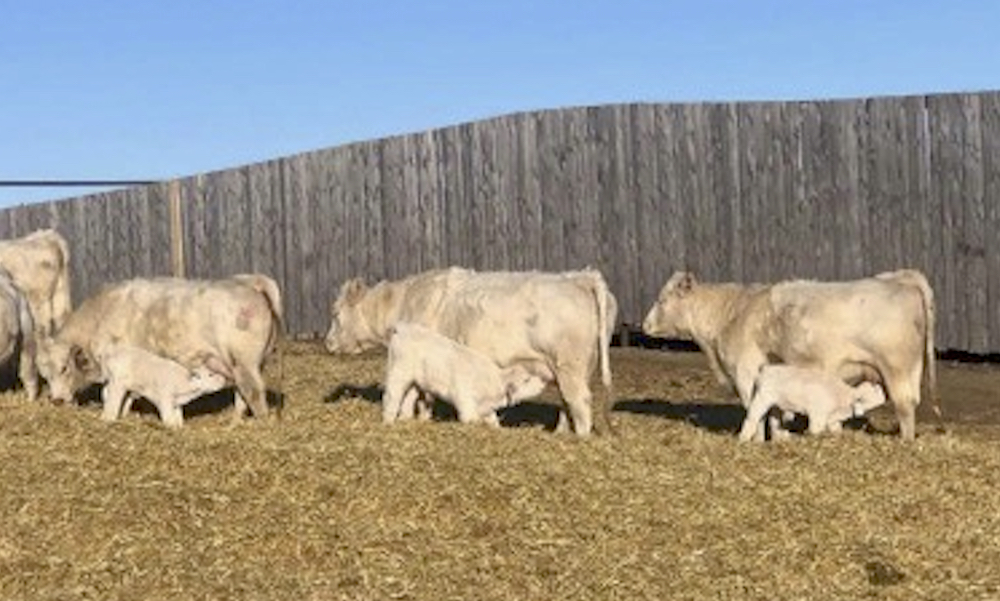
After four years of testing bulls offsite, the Millers have installed the GrowSafe Systems technology at their Hanna location to test their cattle on site whenever they like.
“Some of our colleagues that have been selecting for RFI for the last 10 years say they’ve got their own calves that are now producing 20 to 25 per cent better, feed to gain,” says Lyle. At the current barley price of $9 per bushel, a 12.5 per cent improvement in feed efficiency on a 650-lb. steer finished to 1,450 lbs. would result in a feed cost savings of $153 per head, he notes. Under the same conditions, an improvement of 25 per cent would mean $306 per head in savings.
One of these colleagues reported a minimum feed intake reduction of 15 per cent in females, while others mentioned up to 35 per cent reductions, allowing producers to run more cattle on the same land base with less feed.
As part of their seedstock expansion, Ed, Lyle and feedlot consultant Joe Lofthouse toured around 48 Charolais herds in three provinces to source genetics for the foundation of their purebred program. Embryo transfer also played a large role.
“We focused on operations first that we could see had done the right things relative to the maternal side, the feet and the udders, and we looked for what they call that ‘unicorn,’ where we weren’t sacrificing calving ease. We wanted performance, and we wanted it to come from cow families that were going to stand up long-term,” says Lyle.
In addition to performance traits, longevity in their bulls is crucial. “It’s very important to us that the cattle are grown properly,” he says.
“We feel that bulls need to be developed on high-roughage diets, slowly. Our cattle likely are going to be presented more so in their working clothes — we don’t believe in pushing them to try and make them look the part for a sale.”
Highway 21 Group’s inaugural bull sale is March 21 at their Hanna ranch, with about 75 bulls on offer. This includes around 30 Simmental-Angus long yearlings, 12 Charolais two-year-olds and around 30 Charolais yearlings. Buyers can ask about the three-year bull finance program available, and customers have the option to sell calves by these bulls to Highway 21 for feeding. The intent is to be able to buy more feeder calves from bull customers, and they would like to get to a point where they can pay producers a premium based on the calves’ performance. More details about the calf buy-back program will be available in their sale catalogue.
For a deeper dive into the bulls for sale, the Highway 21 Group website (www.highway21group.com) provides even more production data, using records powered by Herdtrax data management software. Offering this feature is something the Millers are very excited about, with the idea being that a buyer can select the traits they value to find exactly the bull they want.
“We’ve made it an easily sortable, easily viewable, interactive catalogue, you might say, where if somebody’s focused on birth weight, for example, they can sort the cattle by birth weight,” Lyle says. “If they’re interested in how the animal indexed for weaning weights or which ones are the best performing, they can sort for those attributes. Same thing for grade.”
After sorting through hundreds of sale catalogues themselves, they wanted the data to be easily accessible and presented in a consistent format. In addition to linking to the pedigrees of the Charolais bulls, each animal also has a link to its Herdtrax records.
“The HerdTrax link will let the producer look up the mother of that calf, how many calves she produced, what her calves produced if they were heifers, what sire she came out of, how many calves he produced — basically anything you want to know.”
Accessing this detailed level of data helps with decision-making and improves your product over time, both Ed and Lyle state, noting how a lack of information can lead to a disconnect between each stage of the supply chain. “There’s not always that synergy from the purebred to the packer,” says Lyle.
“That’s one of the advantages that we thought we could bring forward is that if we put ourselves in the seedstock side, in the front end, let the producer produce the calves, offer the buyback of the calves as we have the relationships and the experience on the packing end for marketing cattle.”
Accordingly, they’re happy to provide performance data on feeder cattle back to their customers in this program. For bull buyers who sell calves elsewhere, Highway 21 shares a cost of gain analysis program to help in deciding when to sell their calves. As well, they offer no-cost assistance in marketing these calves to other feedlots to ensure they promote the information feeders find valuable.
“What’s held the industry back is the segregation, and we’ve seen it from one end to the other and see huge opportunities in involving the cow-calf producer with us. We’re prepared to finance cattle for them, feed cattle with them and transfer information to them,” says Ed.
After decades in the industry, embracing opportunities to improve their product is the kind of thing that Ed finds motivating about being in the cattle business. “The most exciting thing that we see in the cattle industry right now is being able to measure some stuff that’s not been measured so the right changes can be made,” he says.
“Every time something is found to work really well, everybody says, ‘Why didn’t we look at that sooner?’ That’s always the way it is with new technology when it really clicks.”
This enthusiasm and the drive to always move forward is reflected in each generation involved in this operation, something Ed is very proud of. “When I look at everything we do,” he says, “what I see here that makes me excited is our family, whether it’s the first generation, the second or third generation, all have a passion for what we’re doing.”
As well, he’s grateful for everyone on their team who has played a role in getting to where they are today. “Our current key leaders and long-term members of our team include Mel Wright and Kyle Kaiser (shop production and accounting), Scott Brady (cattle procurement, customer service), Philip Hofer (manager, Hanna Genetic research division), Joe Lofthouse (genetic marketing), Robin Roeder (farm management) and last, but not least, our family.”


